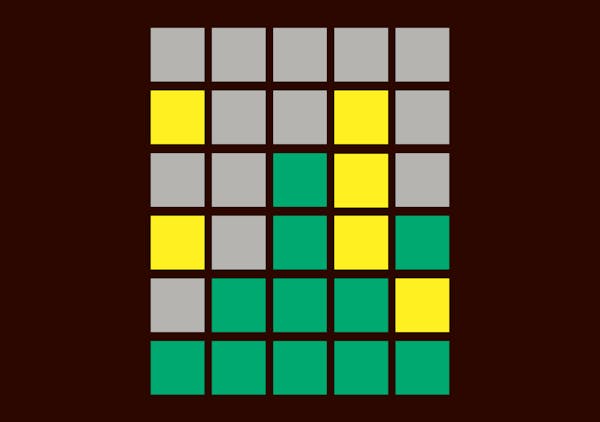Are you and your Valentine nearing the brink of breakup? Some married couples on the rocks think there are only two options: divorce or the status quo.
Choosing between the two is agonizing enough. Staying the course in an unhealthy relationship might seem unacceptable, and yet divorce can be excruciating and have lasting consequences on children or one's financial well-being.
But what if there were a third path — one in which couples could spend six months trying to restore their relationship and understand how they arrived at this point? And what if couples could clearly see all three avenues laid out, so whatever choice they made, they could have confidence in their decision?
This is the concept behind a kind of short-term therapy known as "discernment counseling." Two University of Minnesota family social science professors — Bill Doherty and Steve Harris — have pioneered this method, wrote a textbook about it in 2017, and have been teaching it to therapists around the world. They lead the Minnesota Couples on the Brink project, which has developed a clinical approach to the broader issue of divorce decision-making.
I spoke to Harris, who also sees clients in his private practice as a marriage and family therapist. Here's what you need to know about this relatively new approach:
Who it's for
It's aimed at couples who are considering divorce but aren't sure if it's the right option for them. A lot of couples on the crossroads of divorce feel lost. Discernment counseling can slow down the decision-making and give them greater certainty about the future of their relationship.
"I tell people that this is not about you and your partner bonding," Harris said. "This is about deciding whether you're going to make the right choice."
When traditional therapy doesn't work
Doherty and Harris found that more than a quarter of couples who seek traditional couples therapy have "mixed agendas" — one partner is leaning into the relationship, while the other is either ambivalent or ready to get out.
When the dynamic is that lopsided, it's tough for therapists to gain traction because only one partner is doing the work, Harris said. "That couple goes away from couples therapy feeling like, 'There's no hope for us.' The problem is the therapist isn't prepared to handle a couple where they haven't gotten their agenda in alignment yet."
Discernment counseling can get both partners on the same page in a relatively short amount of time — it's just one to five sessions, as opposed to more open-ended traditional therapy.
How discernment counseling works
When Harris meets with couples, he outlines those divergent paths: divorce, the status quo, and reconciliation. For the reconciliation path, he encourages them to take divorce off the table for six months and ask what it would look like if they were to work on a few things about themselves.
The therapist can also identify some patterns of how each partner is interacting in the relationship.
"When somebody starts to develop a divorce narrative, what is often missing from that is their own contributions to the decline of the health of the marriage," Harris said. "It's easy for me to look at my partner and say, 'Here's all the reasons why I'm dissatisfied, and they all seem to center around you.'"
The clarity comes when each partner can spot their role in the relationship and plot out a plan for personal change. During discernment counseling, they might admit they need to evaluate their relationship with alcohol. Or better control their anger in times of conflict. Or hold their ground in conversations instead of withdrawing.
"The health of your relationship is not totally dependent on your partner and what your partner does, but on how you both show up in the relationship," Harris said. "We help people identify the things that they need to change about themselves that they should probably change whether they stay in the marriage or not."
What couples choose
Just over half of couples in discernment counseling opt for the reconciliation path. About 30% choose divorce, and nearly 20% decide to stay married without trying to restore their marriage. These figures are based on samples representing about 2,000 people, Harris said.
One-on-one conversations
Harris spends time with the couple together, but large portions of the counseling are done one on one. Those separate conversations are necessary because if one person is interested in leaving the marriage, they must be able to speak freely with a neutral party.
"Sometimes when our friend groups pick one side, it's a little unsatisfying. You've got family members who are saying, 'Please don't divorce Mom,' and you've got other people saying, 'You've got to get out.' We provide a place where they can voice all of those concerns without feeling like they have to protect their partner's reputation or protect their own reputation."
What reconciliation looks like
The reconciliation path doesn't mean kicking the can down the road. After discernment counseling concludes, couples may transition to marital or individual therapy, intensive programs for drug and alcohol consumption, getting screened for depression and trying different medications, or anything else that people might need so they can show up as the best versions of themselves in a relationship.
Harris encourages couples to put divorce back on the table after the six months and evaluate if the marriage is in a better place. He finds that people on the brink of ending their marriages generally want to do right by themselves, their families and their children.
"If I say, 'Can you just work on it for five years?' I think we lose all kinds of people," he said. "But I think there are enough people who have said, 'I can do this for six months. And it's worth that six-month experiment to be able to say to my kids we really tried.'"
How to find a discernment counselor
Go to innovation.umn.edu/mncouplesonthebrink/ for more information about the Minnesota Couples on the Brink project. You'll find about two dozen therapists who have completed the training in discernment counseling.

Yuen: What's in a boat name? I asked this Minnesotan viral TikToker for help.

Yuen: Why it's not rude to ask your houseguests to take their shoes off

Yuen: Seriously, what purpose do mosquitoes serve?

Yuen: St. Paul columnist Rubén Rosario told stories with conviction and empathy





